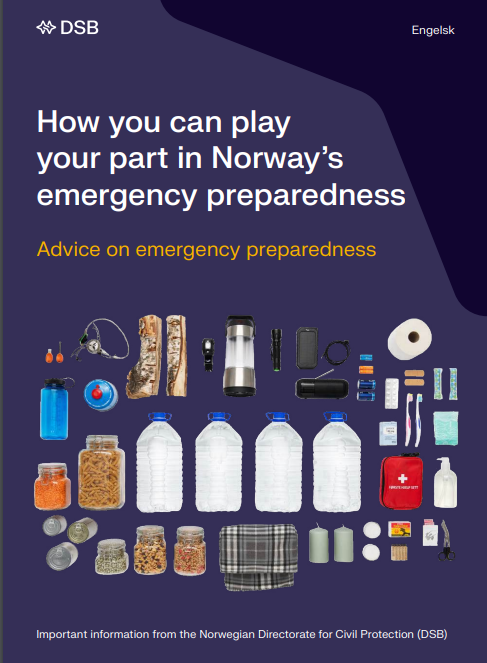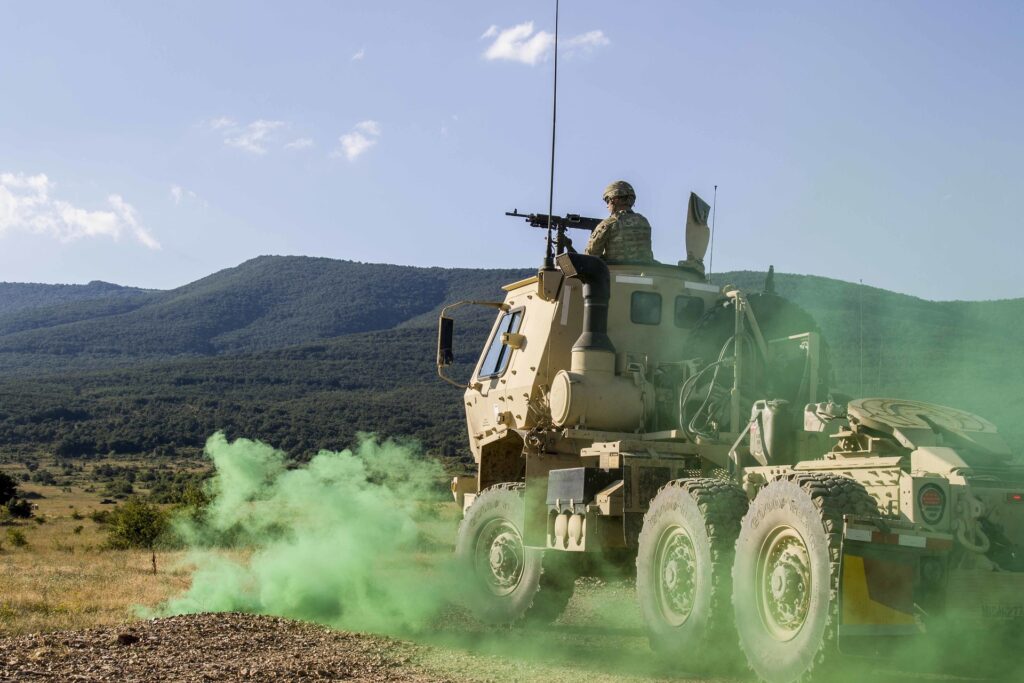A Climate of Tension in Europe
Since Russia’s invasion of Ukraine in 2022, tensions across Europe have escalated, especially after the U.S. authorized Ukraine to use long-range missiles on Russian territory. In this uncertain context, several European countries have started reevaluating their defensive strategies and preparing for the possibility of war.
The First Steps of the Nordic Countries
In 2023 and 2024, Finland and Sweden ended their tradition of military non-alignment by joining NATO. This historic decision followed the invasion of Ukraine and the growing threat posed by Russia to their security. Finland, which shares a 1,300-kilometer border with Russia, has maintained a high level of defense since the Cold War. It includes mandatory military service and strategic reserves of food, fuel, and medicine for prolonged crisis.
In contrast, Sweden significantly reduced its military infrastructure after the Cold War and only recently began strengthening them. In 2017, for instance, the country reintroduced mandatory military service.
Sweden: A Guide for War Preparedness
In January, the former Swedish Armed Forces commander-in-chief, Micael Bydén, urged citizens to “mentally prepare for war”. Then, last month, the Swedish Minister of Civil Defense declared that the global context had changed. Thus, the information communicated to Swedish civilians received a yellow booklet titled « Om krisen eller kriget kommer » (« In Case of Crisis or War »), published by the Swedish Civil Contingencies Agency (MSB).
This 32-page guide, provides practical advice : how to stay safe, essential items to stockpile, and where to find reliable information. It underscores the risks to civilians, highlighting that modern warfare increasingly targets civilian populations, as seen in Ukraine.

Norway: A Self-Sufficiency Guide
In Norway, a brochure titled « How You Can Play Your Part in Norway’s Emergency Preparedness » was distributed to over 2 million households. Published by the Norwegian Directorate for Civil Protection (DSB), the document encourages citizens to prepare in order to be self-sufficient for at least one week during a disaster or a war. Recommendations include stockpiling food and water, preparing basic medical kits, and developing family plans for communication and gathering in case of emergencies.

Finland: A Digital Awareness Campaign
Finland, meanwhile, launched a website offering similar preparedness advice. Unlike other countries, the government decided not to print brochures, which would “cost millions” of euros. Instead, its efforts only rely on digital tools available in Finnish, Swedish, and English. These include detailed checklists and instructions for various crisis scenarios.

Denmark: An Email Campaign
Denmark also chose a digital approach. The Danish Emergency Management Agency regularly sends emails to citizens with practical advice on preparing for 3-day crises. They include tips on water, food, and medicine. What is more, 300,000 copies of a short-printed guide were distributed to libraries, citizen service and other places of passage.
They also launched a website gathering the same information and users can download a guide without pictures and layout. It is available in Arabic, Bosnian, German, English, Farsi (Persian), French, Russian, Turkish, Ukrainian, Urdu and Norwegian.

Poland: Huge Investments in its Defense Sector
With a record defense investment exceeding 4% of its GDP, Poland has become the Europe’s largest military force in terms of personnel and equipment. The country has acquired modern equipment, including Abrams tanks and anti-aircraft defense systems, while building defensive infrastructure along its borders with Russia and Belarus, such as fortifications and trenches. In addition to this, the country is also preparing its citizens through training programs on first aid, crisis management, and basic military skills.
Other European Nations Follow Suit
Germany is among the countries bolstering its preparations. In 2022, it allocated an exceptional €100 billion budget to modernize its armed forces. The country has also begun inventorying public and private shelters nationwide, adding to its 579 bunkers that can accommodate nearly 500,000 of its 83 million residents. Through this initiative, Germany aims to create a digital list of these shelters, enabling citizens to locate them with their smartphone.
Persistent Challenges for the EU
Despite significant efforts by EU countries to strengthen their military preparedness, significant disparities remain between member states. These gaps can concern investments as well as industrial and operational capabilities. European initiatives such as the European Defense Fund and joint procurement of weapons have made progress. However their implementation is sometimes slow and difficult, as demonstrated by the delays in delivering military equipment to Ukraine.
Some analysts argue that these measures are insufficient to address the growing seriousness of the threats, particularly in the context of the war in Ukraine. Moreover, European defense industries are not yet adapted to a prolonged production environment, unlike other major powers.
« If Sweden is attacked, we will never surrender. Any suggestion otherwise is false. »
(Extract from the Swedish manual “In case of crisis or war” © MSB)
More Details on the Swedish Guide « Om krisen eller kriget kommer » (« In Case of Crisis or War »)
A Clear and Accessible Document
The text of the guide is simple and clear with illustrations to be accessible to all citizens. Each section covers a specific topic in 1 to 2 pages. It is available in several languages, including English, French, Arabic, Persian, Somali, and Finnish, to reach the diverse communities living in Sweden.
Its Introduction
The introduction of the guide emphasizes the importance for every citizen to prepare for crises, of any kind. It explains that although Sweden is a peaceful country, it is crucial to be ready to face unexpected events to ensure the safety of the country and its loved ones. The sentence « If Sweden is attacked, we will never surrender. Any suggestion otherwise is false. » found in the middle reflects Sweden’s commitment to defending its territory. It asserts that capitulation will never be considered in case of aggression.
Topics Covered
The body of the document addresses various themes on how to prepare for different crises, from natural disasters to terrorist attacks or even war.
Among the topics covered, we find:
- Warning systems: The document explains how to recognize the meaning of siren alerts.
- Seeking shelter during an air raid: It provides instructions on safe places to take shelter, such as basements or windowless rooms.
- Home preparedness: It advises that every household has reserves of food, water, medicines, and other essential items in case of crisis.
- Evacuation: It explains evacuation procedures, including the routes to take, gathering points, as well as how to prepare an emergency kit.
- Civil defense shelter: It describes the civil defense shelters available, where citizens can seek safety in case of war or a major disaster.
- Psychological defense: It offers advice on managing stress, anxiety, and other psychological effects related to crisis situations. Ther are also information on available psychological support.
- Digital security: It explains how to secure electronic devices and personal information against cyberattacks or espionage during a crisis.
- Terror attacks: It provides instructions on how to react to a terrorist attack, including how to remain calm, protect oneself, and alert authorities.
But also…
- How to stop bleeding: Here, the first aid techniques, such as how to stop severe bleeding.
- Extreme weather events: It describes how to prepare for weather events such as storms, floods, or heatwaves.
- Pathogens: It details measures to protect oneself against contagious diseases or epidemics.
- If you require special assistance: It reminds readers of the resources available for people with special needs (elderly, disabled, sick…).
- If you have pets: It provides advice on what to keep in reserve for pet owners.
- If you are worried: It offers helplines and advice on how to manage personal and family concerns during a crisis.
- Finally, the last pages of the guide provide a list of essential contacts. It nclude emergency numbers and assistance services, as well as reliable sources of information for real-time updates.
Read or Download the guide HERE to learn more.













